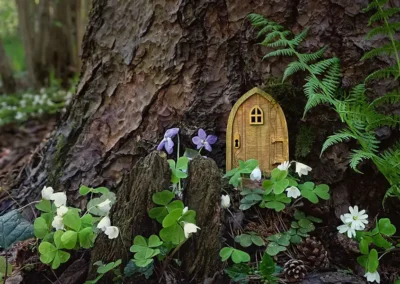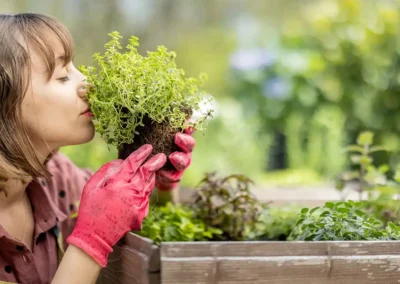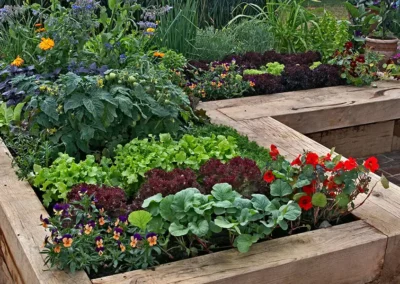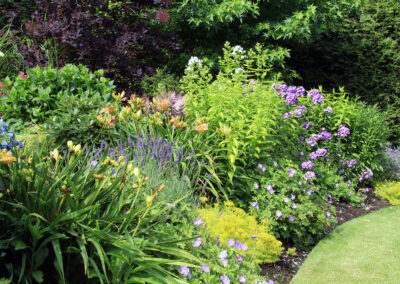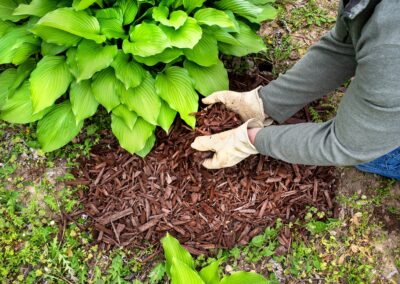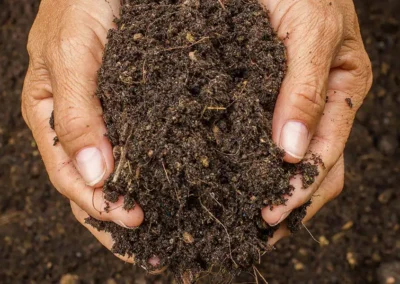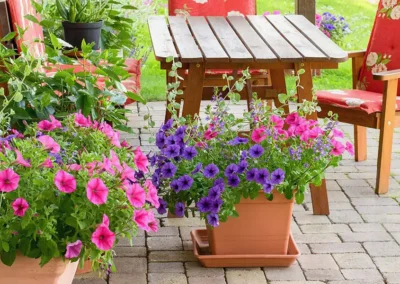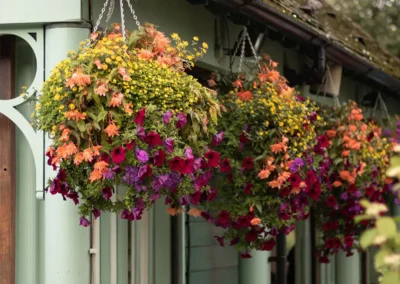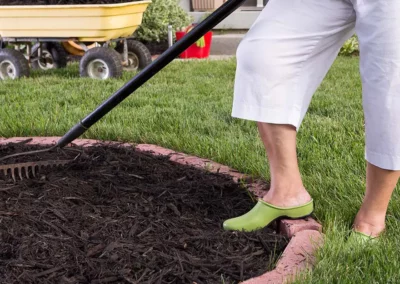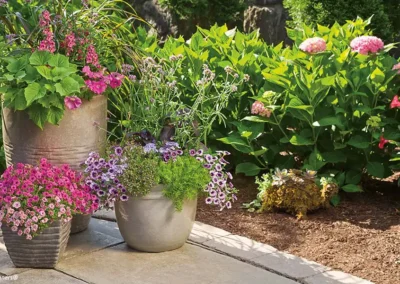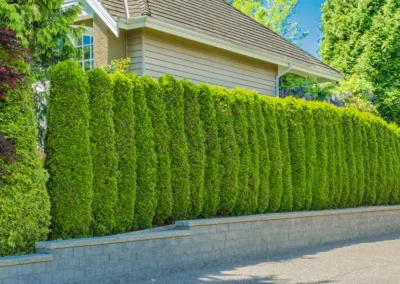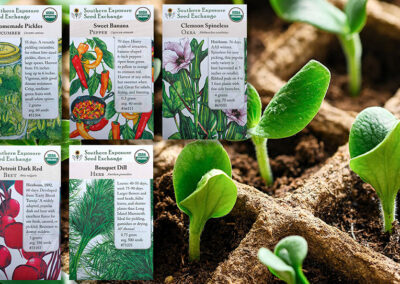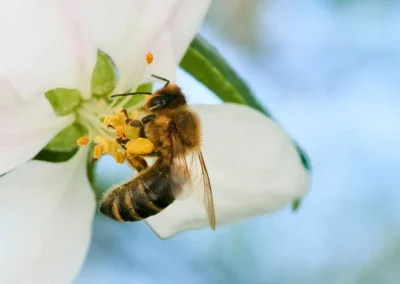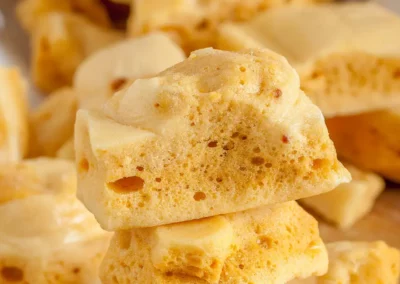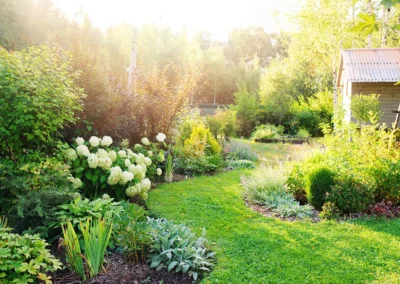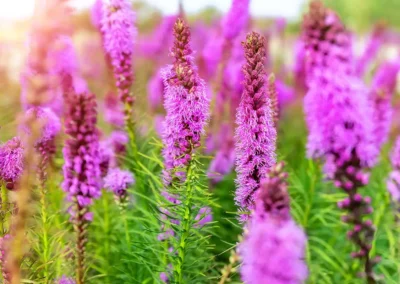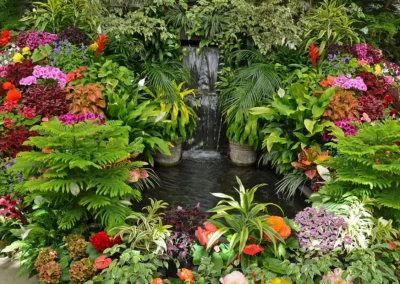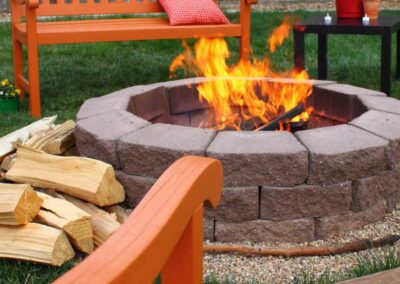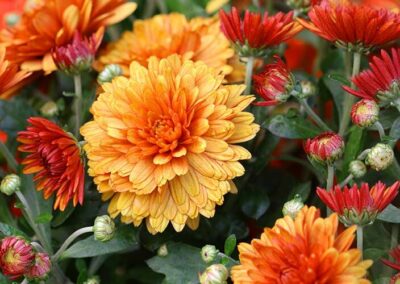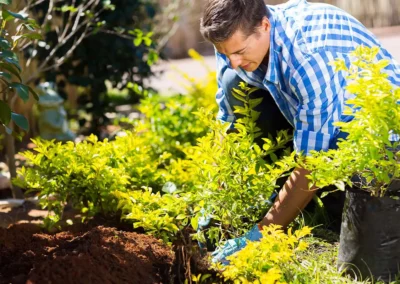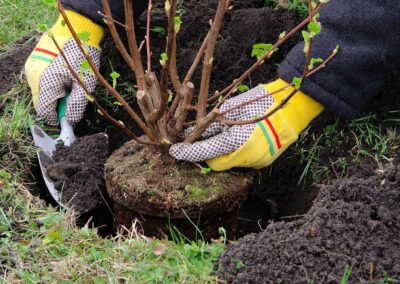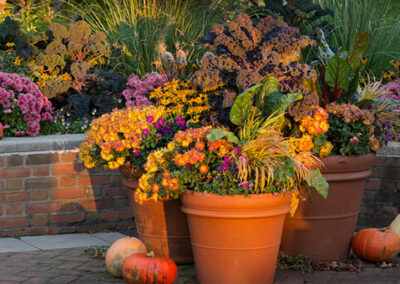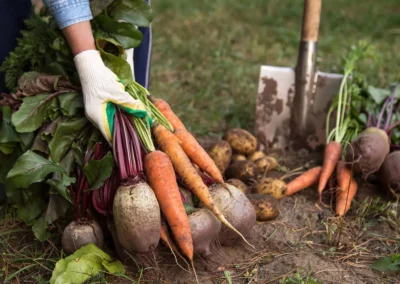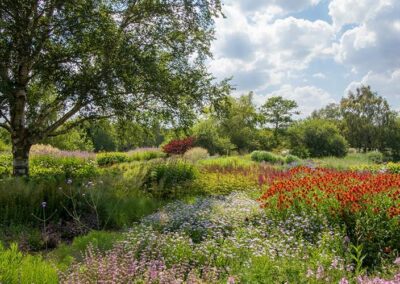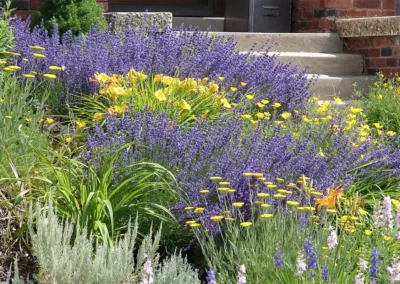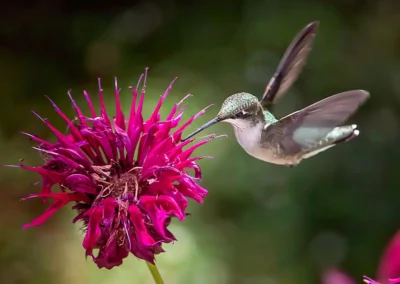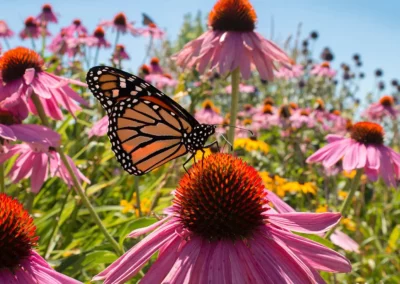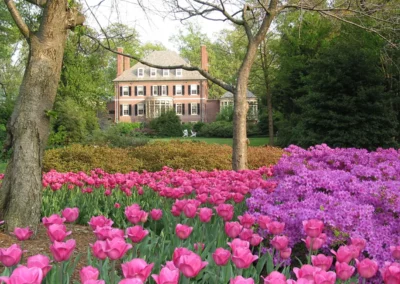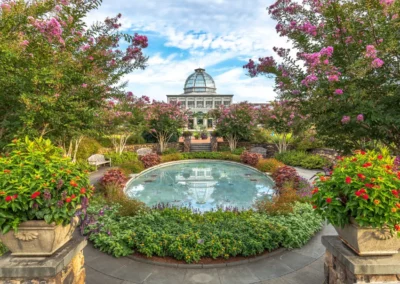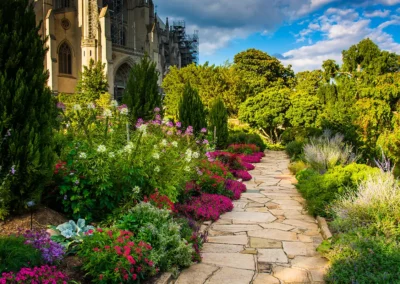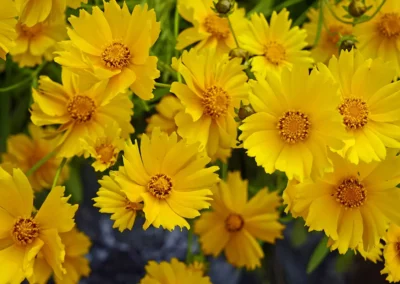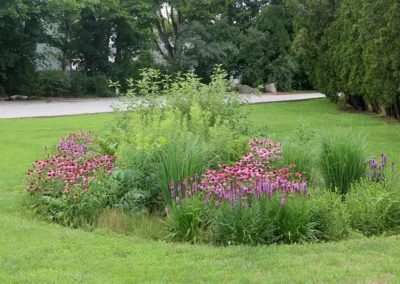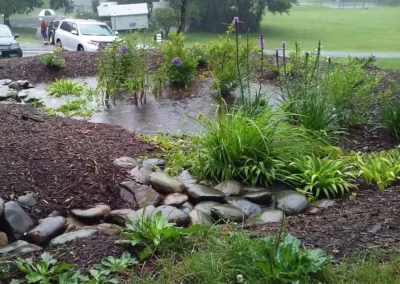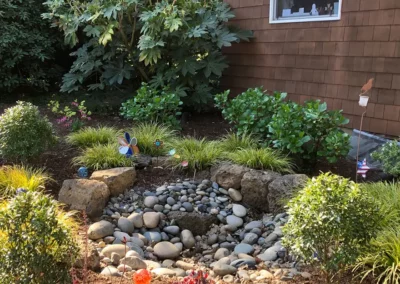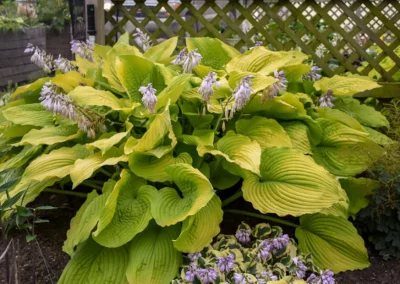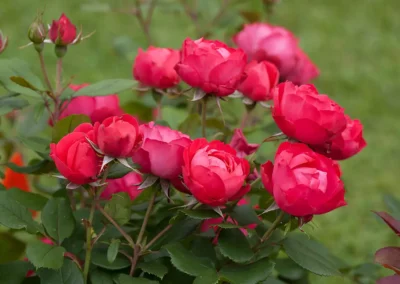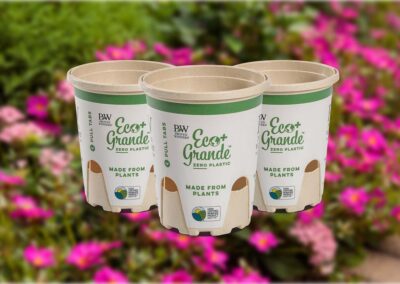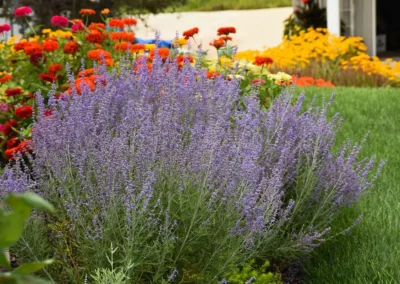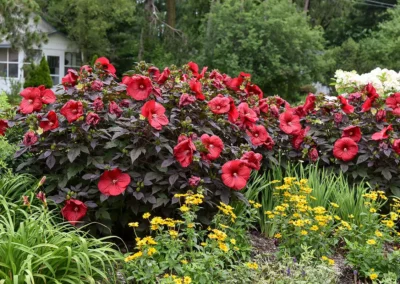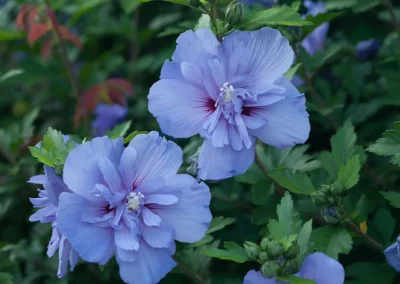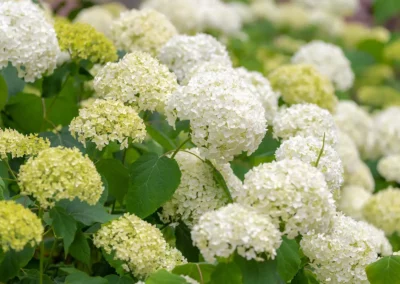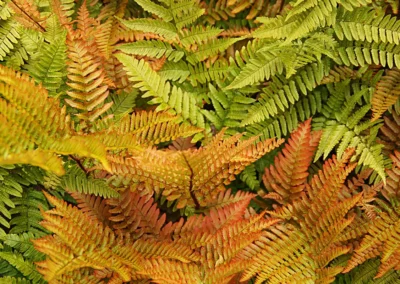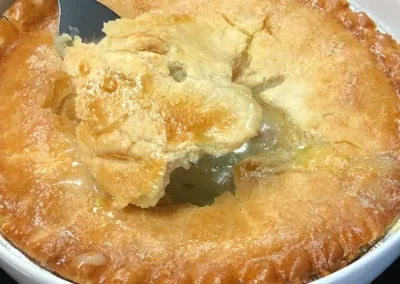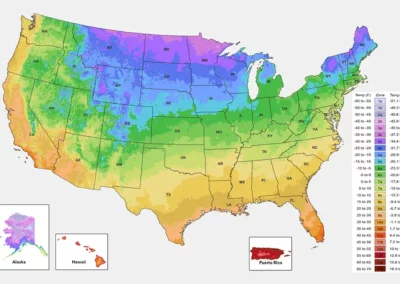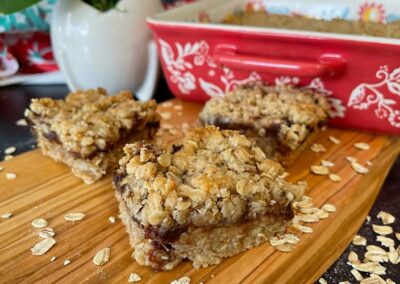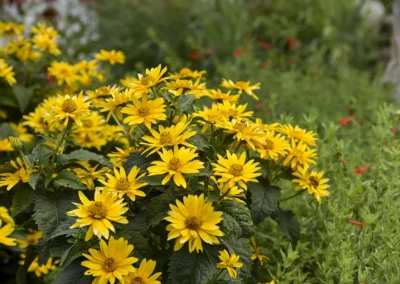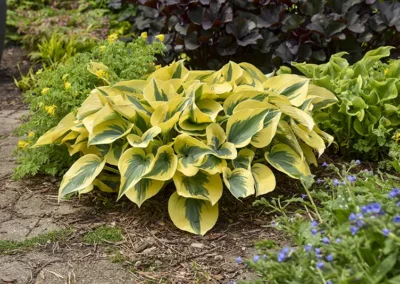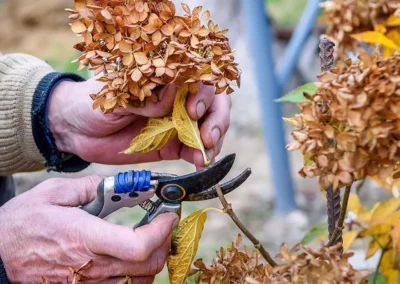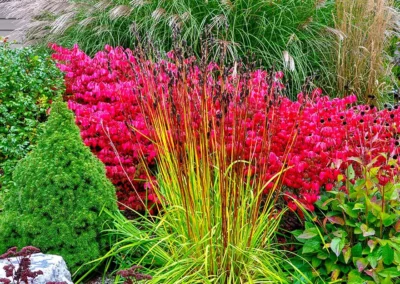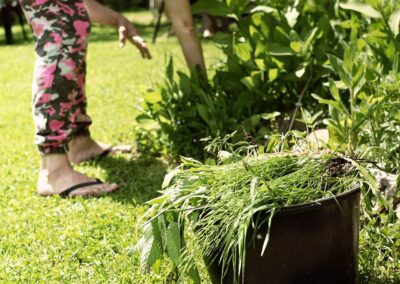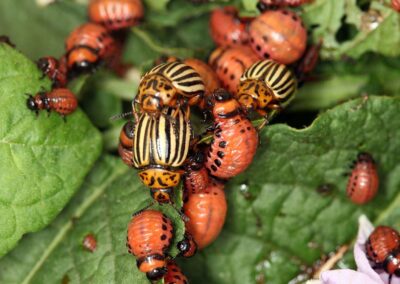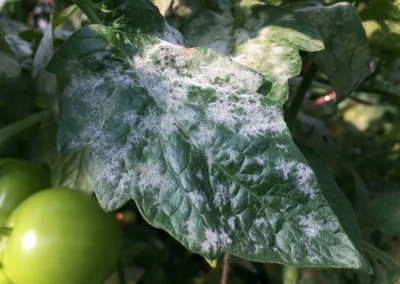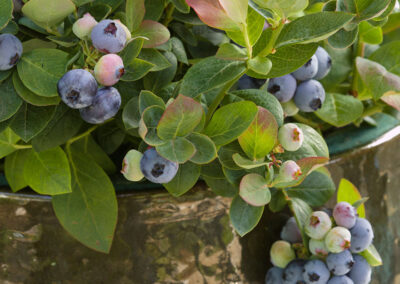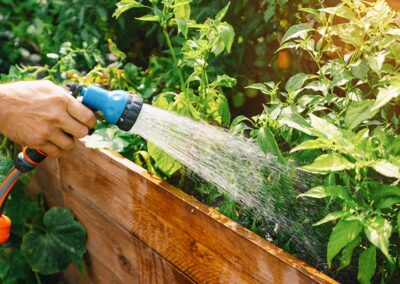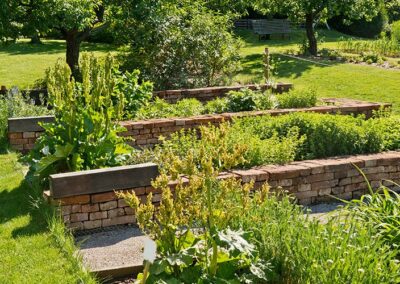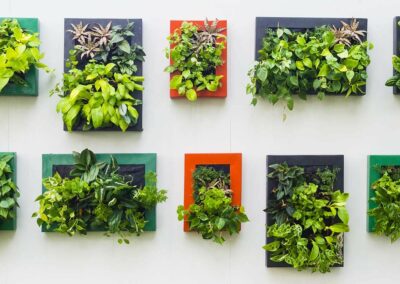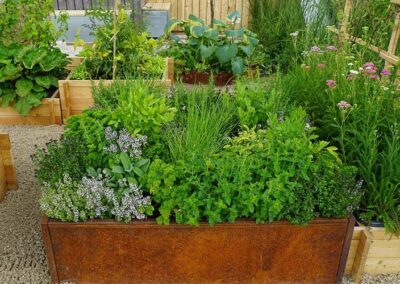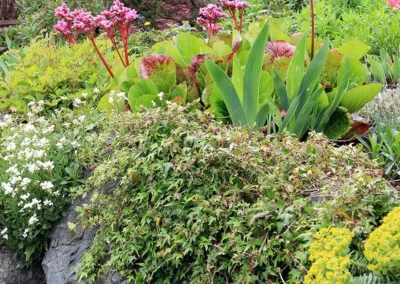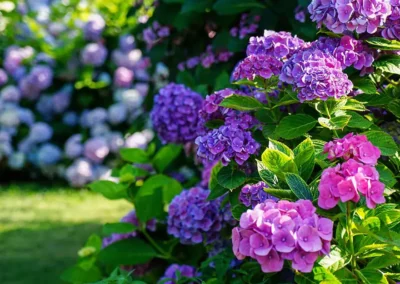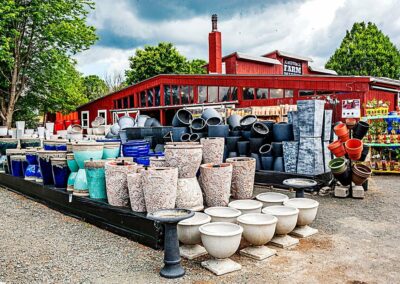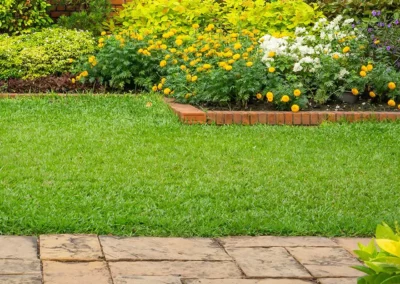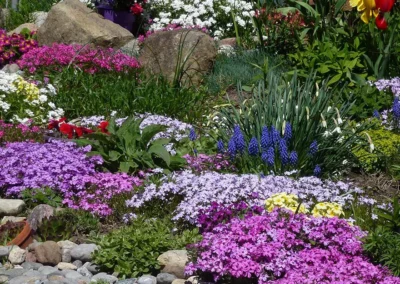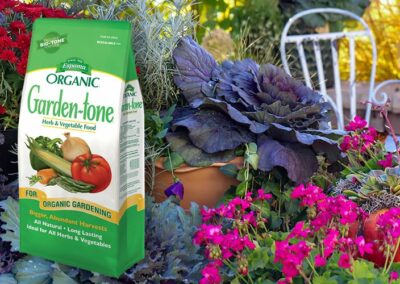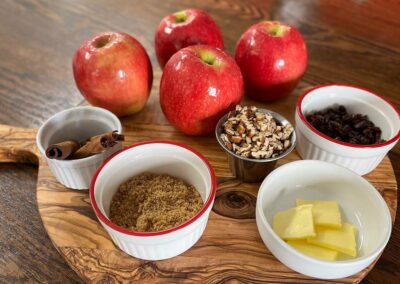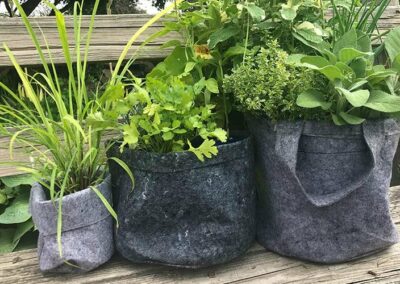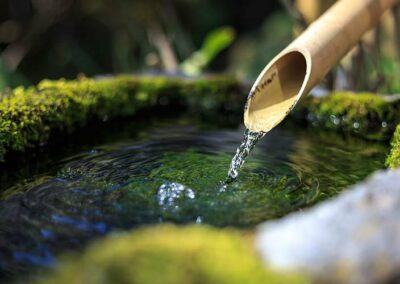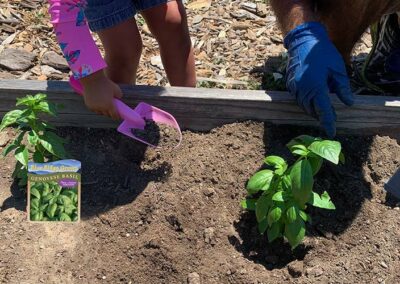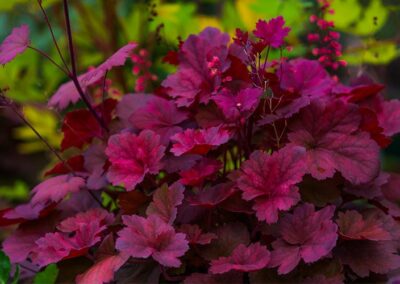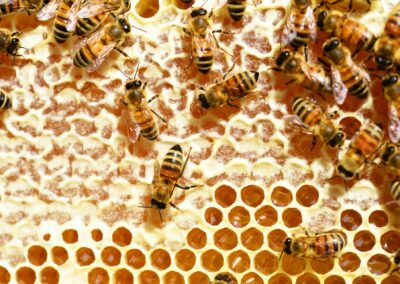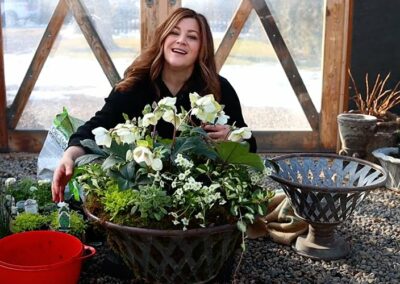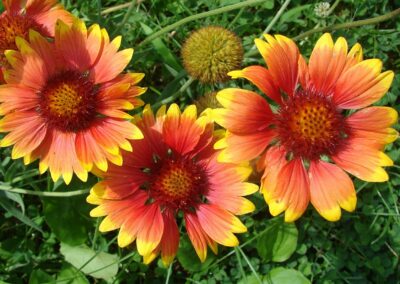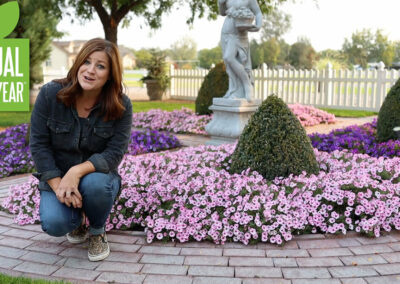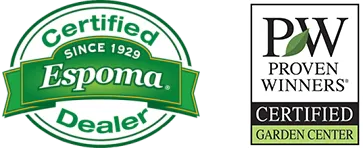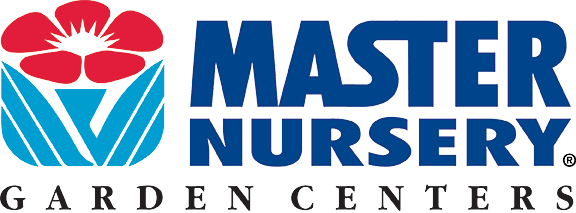Gardening is more than just planting seeds or smaller plants and watching them grow—it’s an invitation to connect with nature, nurture life, and create something truly beautiful. Whether you’re dreaming of colorful flower beds, a flourishing vegetable garden, or just a cozy corner of greenery, understanding the basics of gardening is the foundation for success.
Think of gardening as an art mixed with a little science. By learning the basics—like how plants grow, what they need to thrive, and how to care for them—you set yourself up for a rewarding experience that can benefit your health, your home, and even the environment.
Six Basics That Will Keep You Successful in the Garden
Light & Location
All plants need sunlight to grow, but not all plants need the same amount of sunlight to thrive. You’ve probably seen “full sun,” “part sun,” “part shade,” or “full shade” terms associated with plants. But do you know exactly what those terms mean? They’re important!
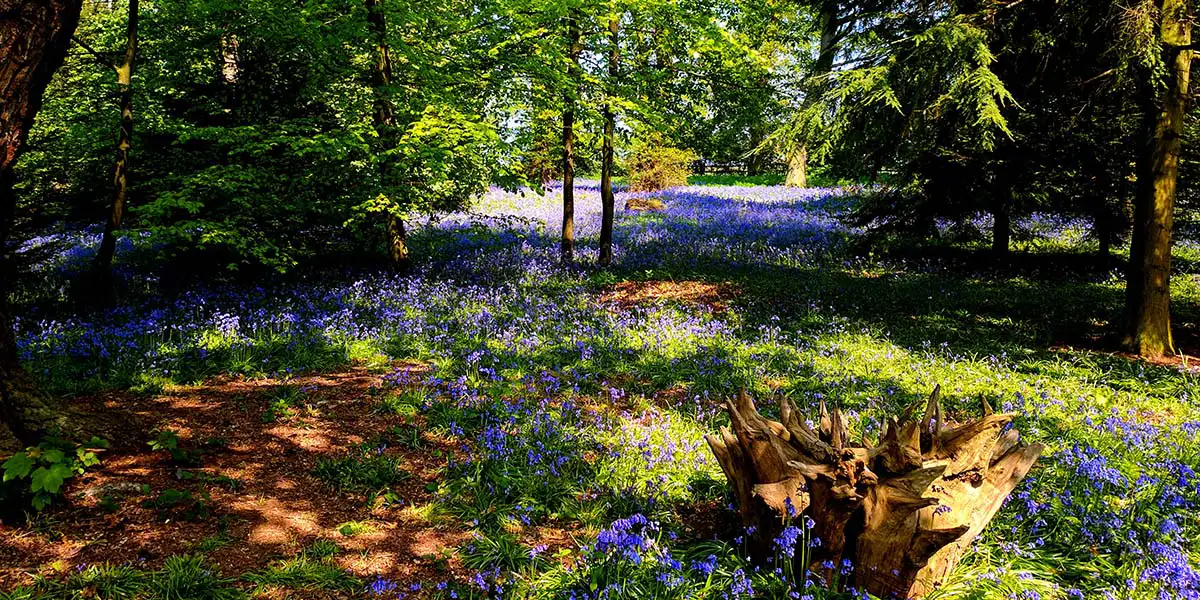
We mentioned the different light terms that you might find on plant tags and in care instructions. But do you know exactly what those terms mean?
- Full sun: These plants typically need at least six hours of direct sun daily.
- Part sun: These plants typically thrive with three to six hours of direct sun per day.
- Part shade: These plants typically thrive with three to six hours of sun per day, but need protection from intense mid-day sun.
- Full shade: These plants typically need three hours of direct sun per day, preferably in the morning.
Notice that full shade doesn’t mean no sun!
So what happens if you put a “full sun” plant in a shady area? It won’t get as big, as lush or have as many blooms as it would if it lived in full sun. On the other hand, if you put a “full shade” plant where it gets direct sunlight most of the day, it’ll likely get burnt by all of those rays and die because it can’t tolerate that much heat.
Now you know why it’s important to know your space and understand the kind of sun exposure each area receives during the growing season so you can plant with confidence.
Healthy Soil
Let’s say you bring home a plant you love from the Garden Market and put it in the dirt in the ground. But wait! Dirt is not soil. And healthy SOIL is what your plant needs…
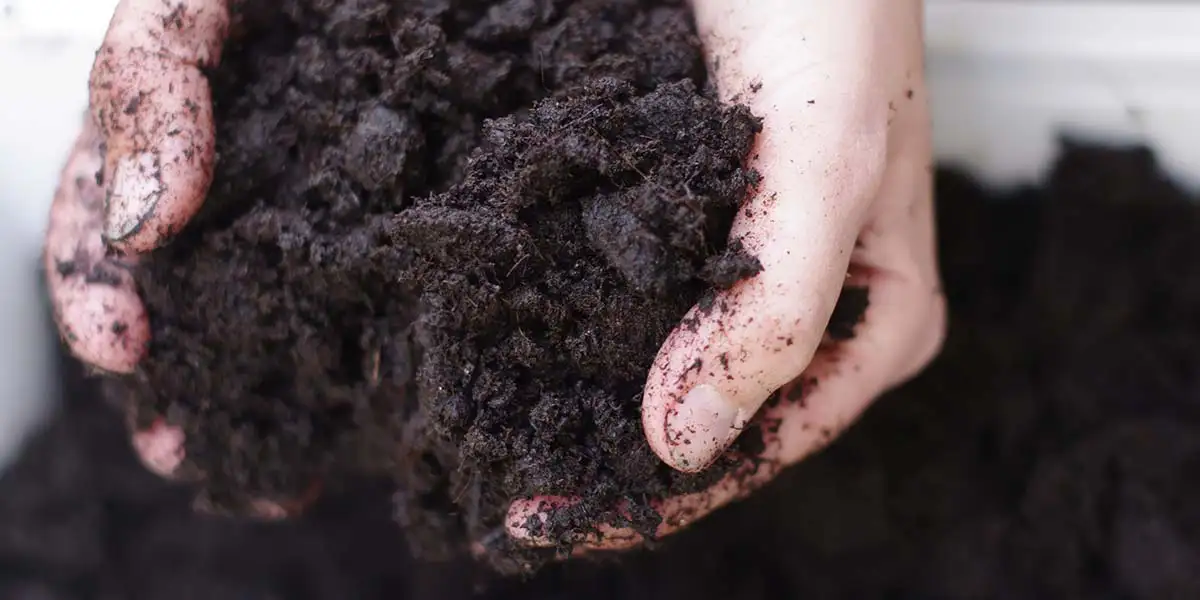
This is so, so important! Don’t just put your plant in any old ground dirt… For your plant to live a healthy life, it has to be in SOIL.
Unlike plain dirt, soil is made up of live organic matter, minerals, and other nutrients. This is your soil’s fertility.
It also literally keeps your plant in place, and allows water and oxygen to get to your plant’s roots. This is your soil’s texture. It should be strong enough, but light and fluffy enough… Think chocolate cake.
The easiest way to improve your soil so its fertility and texture are just right is to work in some compost, an organic material. Not only does it add nutrients, it also improves soil structure and drainage.
Now you know the dirt on… Dirt. Turn yours into healthy soil for healthy plants!
Water
Properly watering your plants… Easy, right? Watering IS easy, but that’s part of the issue. Did you know that the most common way to kill a plant is to overwater it? Giving your plant the water it needs—no more and no less—is critical to its health and well being.
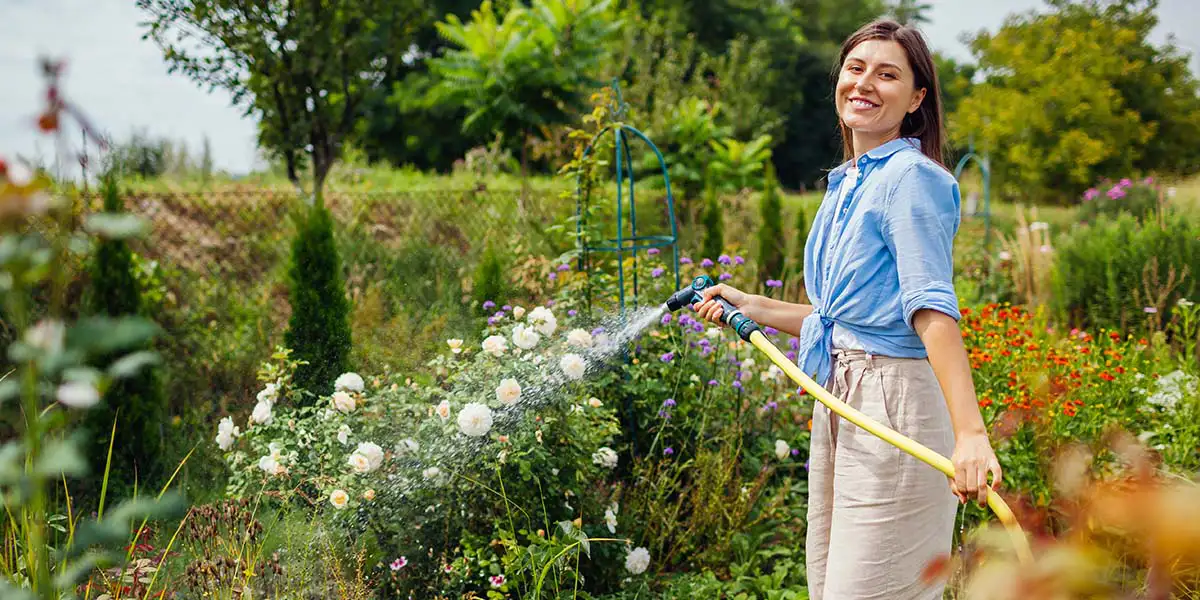
Watering your plants properly sounds like it should be a simple thing to do. And it is! But many people “over love” their plants by “over watering” them. Again, the most common way to kill a plant is to overwater it.
So how much water is right? A common rule of thumb is that most outdoor plants need the equivalent of one inch of rainfall a week, on average—enough to soak into the soil about six inches.
However, in hot weather, plants may need more. ALSO, be mindful that some areas of your gardening space may be drier than others due to tree canopy, roof overhangs, and other things that can block rainfall.
So. Follow these good watering habits for good results:
- Check your soil moisture FIRST before watering. Stick your finger in the soil about an inch or two down. (Check container plants more often. They have less soil to hold water so will need more watering.)
- Speaking of frequency, newly-planted plants will need more frequent watering than more mature plants.
- Finally, water deeply and less often rather than lightly and more often; this encourages roots to grow longer and deeper.
What does water do for your plants? It carries the nutrients each plant gets from the soil through its roots and then throughout the rest of the plant. It also helps with photosynthesis and in maintaining your plant’s temperature.
It’s simple. Water well and your plants will be well.
Annuals, Biennials, Perennials…
There are many different types or categories of plants, and you may have seen some terms that confused you. Not to worry! Once you’re clued in, you’ll recognize that these terms will help you better understand what characteristics your plant has.
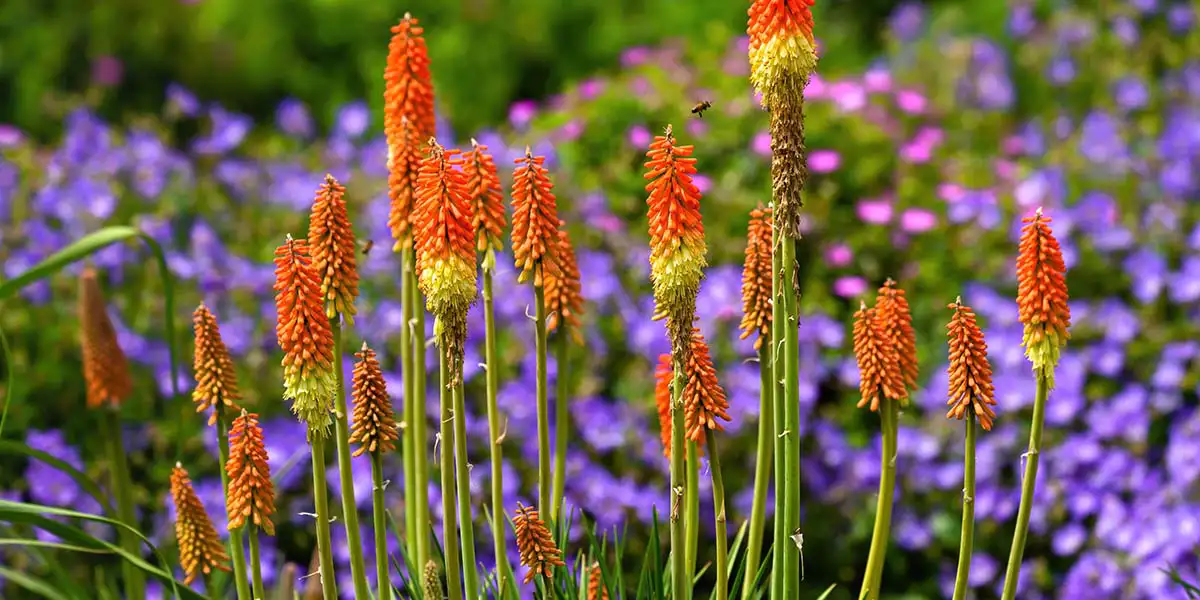
These terms many sound familiar, but do you truly know what they mean? Once you do, you’ll be better able to know what to expect from a plant and how to take care of it.
Of course, it’s important to recognize that plants can behave differently, depending on what climate they are being grown in.
- Annuals are plants that grow from seed, bloom, create seeds, and then die all in one growing season.
- Biennials complete their life cycle in, you guessed it, two growing seasons, often going dormant in the winter. They send up new vegetative growth and flowers the second year before dying.
- Perennials are plants that die back to the ground in the fall, but grow back every year in the spring.
- Woody Perennials are those that have hard, fibrous growth aka woody structure—think shrubs and trees. The leaves may fall off in the fall, but there are still hard (woody) stems or trunks above the ground.
- Herbaceous Perennials have leaves and stems that do not have a woody structure. These plants either die at the end of the season (such as pansies, petunias and tomatoes) or the stems and leaves die back to the ground, but the roots or bulbs survive underground. (These include peonies, irises, grasses, tulips and daffodils.)
- Evergreen Perennials are plants that keep their leaves or needles over the winter. They do lose them, just not all at the same time. Evergreens are good choices as the “structure” or “backbone” elements in your garden.
- Deciduous Perennials are those that lose their leaves in the fall. Those that have interesting branchy, woody structures are attractive in the winter garden.
And now you know what to expect from your plant, right?
Fertilizer
Fertilizer is food, so it’s essential that plants get what they need in order to bloom or grow the way they’re supposed to. Beyond sunlight and water, if you don’t occasionally replenish their supply of nutrients, they can end up having health issues.
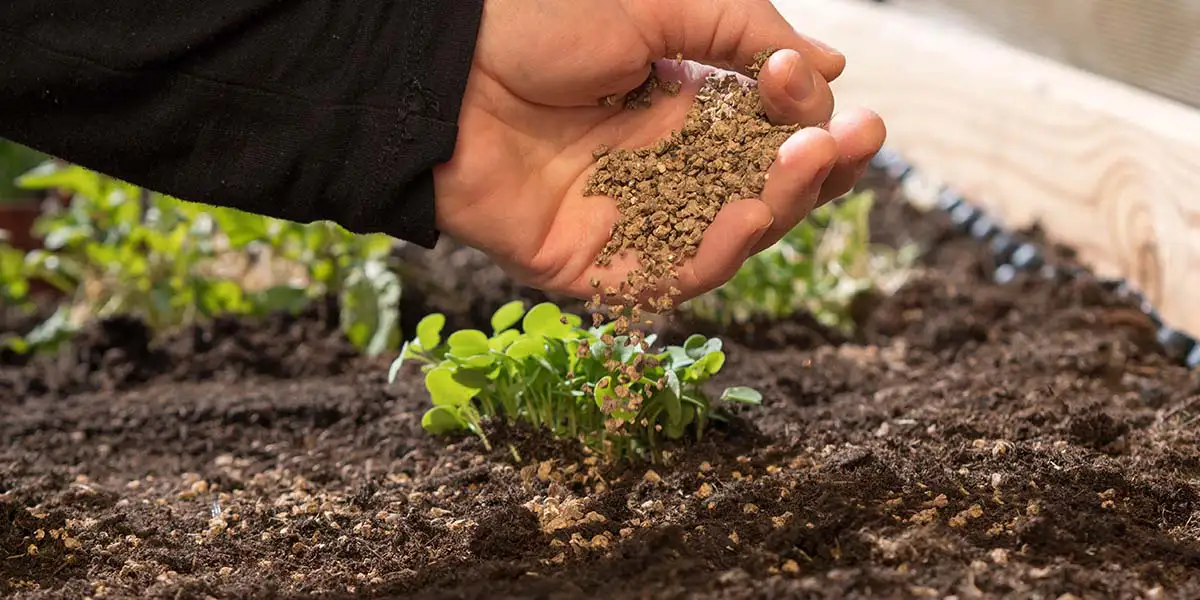
Essentially, fertilizer is food. And yes, if your plants aren’t getting the nutrients they need, you need to feed them.
But don’t plants get nutrients from the soil? Absolutely! And that’s why it’s critical that you know the current state of your soil. You can pick up a soil test kit at a garden store or a local extension office, and the results of your soil test will tell you exactly what’s missing and what you need to provide.
WHAT KIND of fertilizer?
Now that you’ve tested your soil, you can confidently supplement your soil with a liquid or granular fertilizer that gives your plants precisely what they need; these start working immediately. You can also add compost to your soil, but that will take time to break down before it can feed your plants.
A balanced, general-purpose fertilizer shows the percentage of the three biggest nutrients right on the label—these are nitrogen, phosphorus and potassium (N-P-K)—and many times you will see them represented as the numbers “10-10-10.” One brand we love is Espoma® Organics!
WHEN should you fertilize?
It’s a good idea to fertilize when your plants are “waking up” and when new growth is appearing. This is typically in the springtime.
If your plants are heavy feeders, they’ll need to be fertilized regularly. This includes fast growers, profuse bloomers, or plants that have a lot of production. We’re talking about annuals, roses, hydrangeas, fruits, veggies and the like. They need to be fertilized about once a month during the growing season.
The fall brings more consistent temps and rainfall, and offers the opportunity to apply fertilizer to plants (and lawn grass) after they have stopped actively growing. This food goes toward strengthening their root systems and disease resistance.
On the other hand, some plants hardly need any supplemental fertilizer at all, especially if you’ve added compost to your soil before planting them. You’ll find native perennials, as well as some trees and shrubs in this category.
So give your plants the nutrients they need, fertilize them properly, and they’ll happily bloom and grow for you.
Pruning & Grooming
Most low maintenance plants don’t need a lot of pruning or grooming because they’re pretty self sufficient. But helping them out with a little attention every now and then can keep them attractive and healthy.
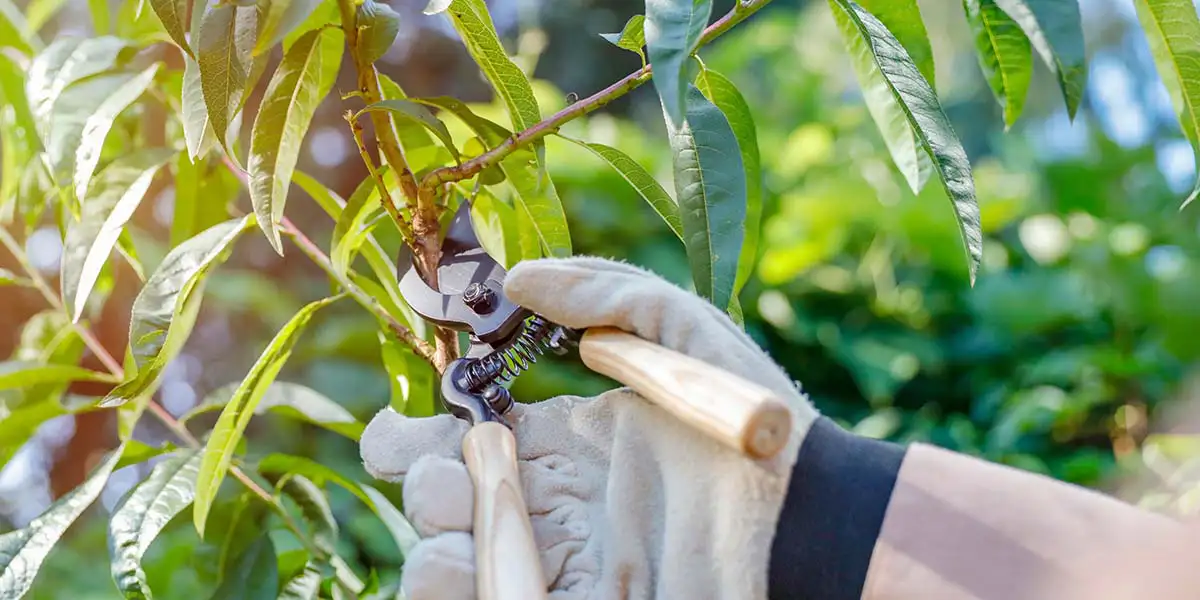
While you don’t always have to get in there with pruners and other tools, most plants benefit from a little attention to keep them attractive and healthy.
First, WHY would you need to prune? A healthy plant is all about growing, so why would you want to cut it back? Well, pruning helps you manage your plant’s structure and size, and can improve its overall health. By improving airflow and access to sunlight, pruning can boost blooming and fruiting, and reduce disease affliction, such as mildew.
That said, you never want to manage the size of a shrub or tree by simply “topping” it off. This will ultimately lead to more issues. It’s best to “thin” your plant by removing unwanted branches, including those that are crossing or rubbing others.
So WHEN should you prune? A good rule of thumb is if your plant flowers between Christmas and late summer, it should be pruned right after it’s finished flowering. And any plant that flowers between late summer and Christmas should be pruned the following spring. (There are always exceptions to this general timing, and hydrangeas and clematis are good examples of that!)
Prune immediately (no matter what time of year) if you find areas of a plant that are:
- Dead
- Dying
- Damaged
- Diseased
What about grooming your plants? There are other activities outside of trimming stalks or branches… One is “deadheading,” which is simply pinching off and removing spent flowers on a plant, encouraging new flowers to grow and bloom. Not all flowering plants need deadheading, so check to be sure yours would benefit from that.
Another task is dividing your plants (or bulbs) to prevent overcrowding. Your plants have been happily growing for a while… Good job! To keep them happy, make sure they have the room they need for healthy root growth. Plus, now you have extra plants to put somewhere else in your space or to give to friends!
Finally, an important grooming task is mulching. Adding mulch around the base of your plants (without touching the plant itself) not only helps your plants look nice, it also discourages weeds, keeps the soil cool and moist, and adds nutrients.
Knowing the gardening basics can help you enjoy a more fulfilling gardening experience!
When you know the basics and understand their importance, you can properly care for your plants, turning your outdoor space into, well, the garden of your dreams.
Your friends at Reston Farm Garden Market are always here with more good-to-know, good-to-grow info.

